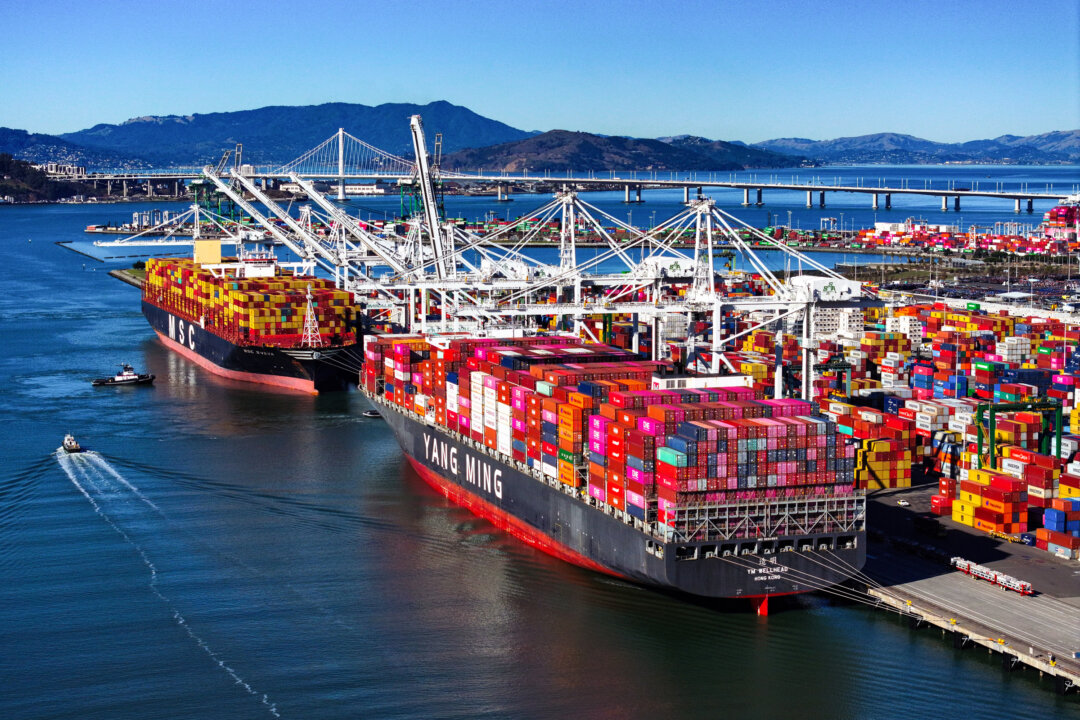President Donald Trump is using tariffs—essentially taxes paid by foreign companies to access the U.S. market—as a primary tool to achieve his America First agenda. And it has delivered results for him so far.
Canada and Mexico both struck deals with the president after he vowed 25 percent tariffs on the two countries unless they drastically reduce the flow of illegal immigrants and fentanyl into the United States. The tariffs have since been paused for a month. Amid a dispute about repatriation flights of illegal immigrants to Colombia, Trump threatened tariffs on the country, after which the latter agreed to accept all of its nationals deported from the United States.
And on Feb. 13, Trump unveiled a plan for reciprocal tariffs and other arrangements to balance its trade with all countries.
“I have decided, for purposes of fairness, that I will charge a reciprocal tariff meeting whatever countries charge the United States of America,” he said. “We will charge them no more, no less.”
He added that other countries usually charge more tariffs than the United States and that “those days are over.”
The president instructed agencies to determine reciprocal tariffs for each country, weighing factors such as tariffs, value added taxes, local subsidies and regulations that make it difficult for American businesses to overcome trade barriers, and currency devaluation that makes U.S. goods more expensive.
At a press call on Feb. 13, a senior White House official said America’s trading partners have different ways, “like fingerprints,” to impose unfair barriers for U.S. products to enter their markets. The official noted that while India’s tariffs are “some of the highest in the world,” Japan, which charges relatively low tariff rates, instead has high structural obstacles such as taxes and regulations.
The official confirmed that each country can negotiate down U.S. tariffs on their goods by lowering their trade barriers.
Vehicles
The White House official singled out the European Union regarding trade imbalances on cars. In addition to charging a tariff quadruple what the United States charges the EU, the latter also imposes an additional value-added tax on U.S. exports, ranging from 17 to 27 percent, depending on the specific destination country.
The United States pays a higher tax to enter foreign markets and buys much more from them. China, the United Kingdom, and India pay a 2.5 percent tariff to sell their cars to the United States. By contrast, they charge 15 percent, 10 percent, and 125 percent on similar products from the United States.
The chart below doesn’t include the additional 10 percent tariffs on all Chinese goods announced on Feb. 1. The Epoch Times used the 2022 global trade data from the World Trade Organization (WTO) for complete market information. The tariff regimes remained largely unchanged between 2022 and 2024.

Currently, Chinese-branded cars are not available in the U.S. market. Volvo, which is owned by Geely, a Chinese company, has a very small market share. However, Chinese auto parts companies are increasing their presence in Mexico, a country that enjoys zero tariffs under the current free trade agreement with the United States.
After Trump imposed additional tariffs on Chinese goods in 2018, 12 new Chinese auto parts factories moved to Mexico, in addition to eight already operating there, according to the Coalition for a Prosperous America, an advocacy organization exclusively representing manufacturers with production in the United States.
Although Chinese electric vehicles are temporarily held at bay due to the 100 percent tariffs, China’s electric vehicle giant BYD is opening a factory in Mexico.
On Feb. 18, Trump told reporters at Mar-a-Lago that new car tariffs would be “in the neighborhood of 25 percent.”
Steel
On Feb. 10, Trump announced 25 percent tariffs on all steel imports, ending previous exemptions for countries including Canada and Mexico. He also increased the duty on aluminum more than twofold, from 10 to 25 percent. The tariffs will take effect on March 12.
The 25 percent tariff on steel is meant to protect the U.S. domestic industry from China.
China has struggled with steel overcapacity for decades. With an annual output of 1 billion metric tons, the country already produces more steel than the rest of the world combined. Due to its property market collapse and economic slowdown, China is expected to consume about a quarter less of its production, leaving 200 million to 250 million metric tons looking for buyers in other countries.
Last year, China’s steel exports reached an all-time high of 110.7 million metric tons, a 22 percent year-on-year increase. That was more than America made at 80 million metric tons and much more than U.S. imports at about 26 million metric tons.
Even though China doesn’t directly export much steel to the United States, the secondary impact of cheap Chinese steel flooding the global market harms U.S. domestic producers.
Trump initially imposed 25 percent tariffs on steel during his first term in 2018, but exemptions granted since then had effectively canceled the effect of the measures. Those tariffs were imposed under Section 232 of the Trade Expansion Act of 1962 over national security concerns.

The recent measure ended all exemptions and Trump said the administration will also “crack down on tariff misclassification and duty evasion schemes.”
According to WTO trade data, the de facto tariffs on U.S. steel imports under Section 232 were nearly zero on shipments from major origins, such as the European Union, China, Japan, and India.
With the new changes, the free trade agreement between the United States, Canada, and Mexico will no longer apply to steel imports. Separately negotiated duty-free quotas with the European Union, the United Kingdom, and Japan will also cease to be effective.
The announced 25 percent tariffs don’t apply to all steel products; only specific products defined under Section 232 in 2018.


